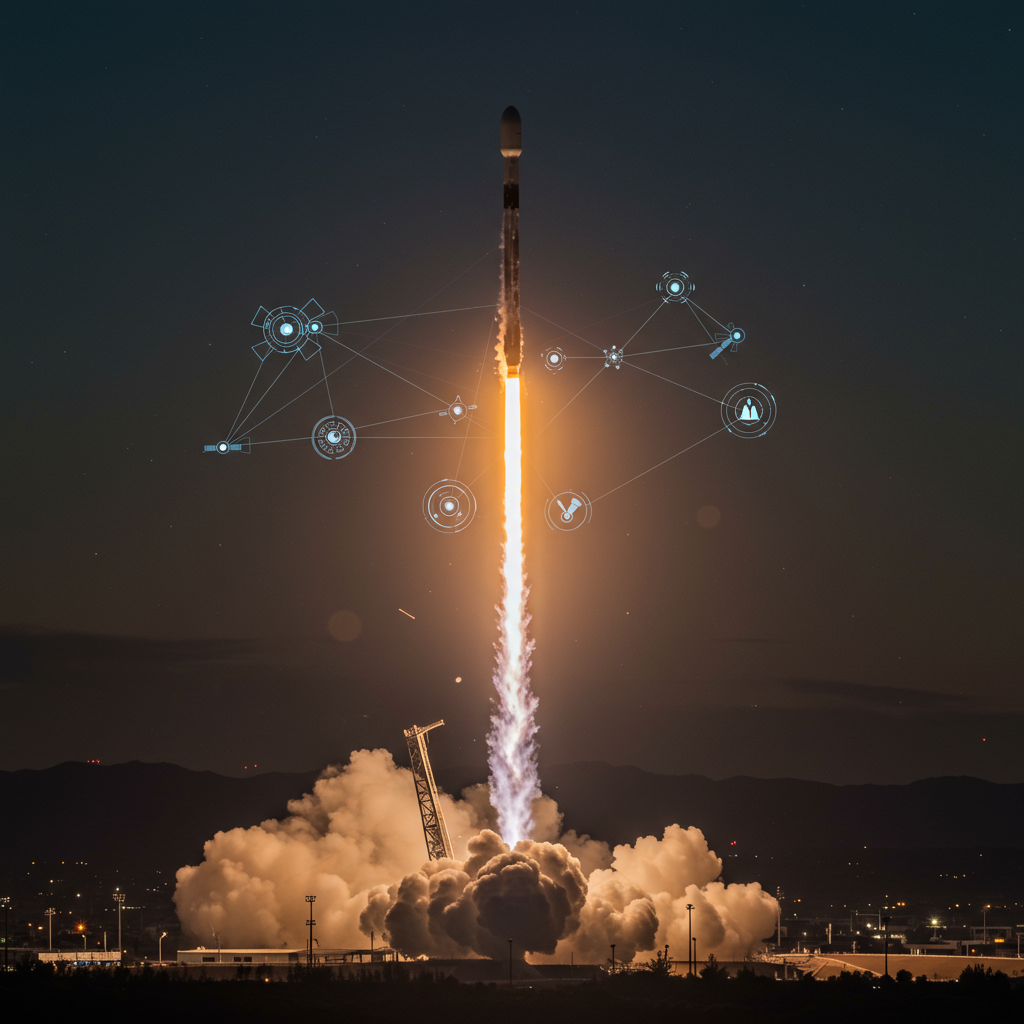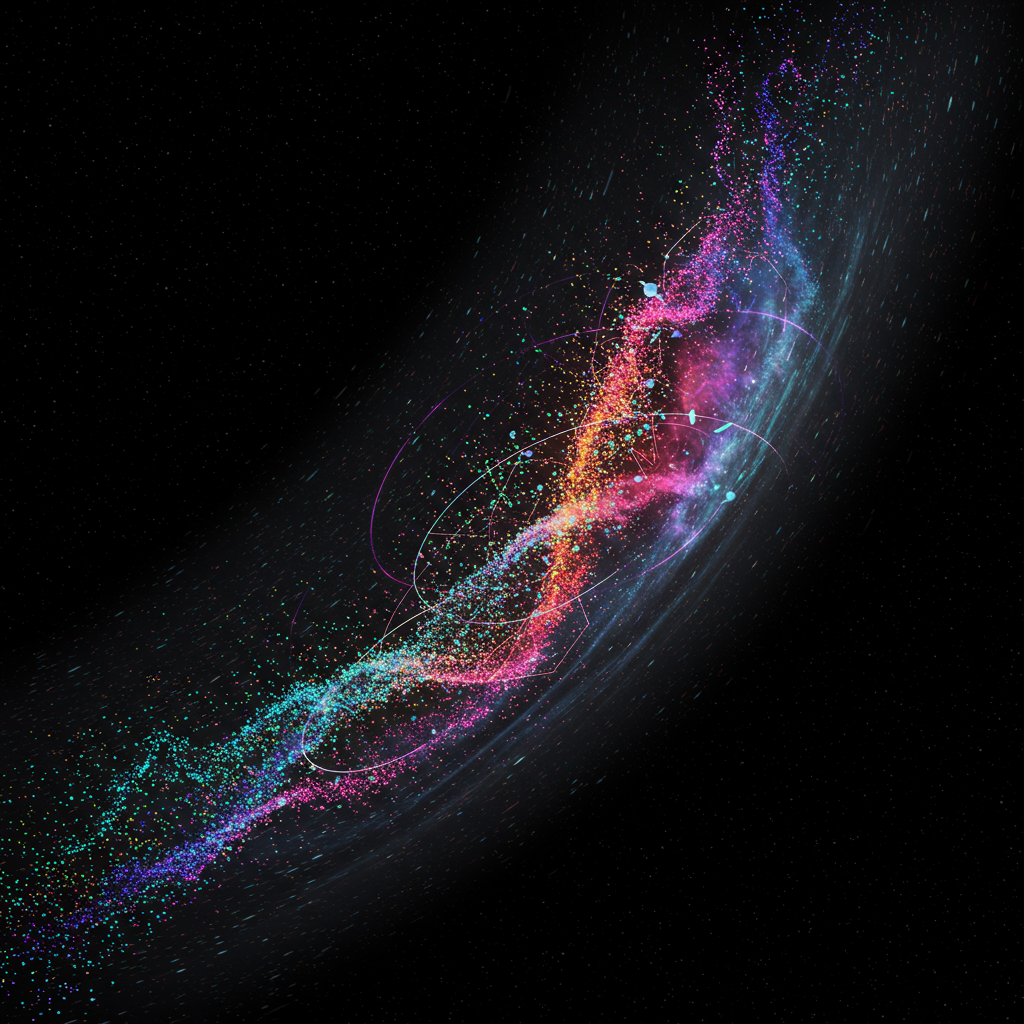Southern California’s Vandenberg Space Force Base is buzzing with activity, preparing for yet another monumental SpaceX mission. This Friday evening marks the fifth SpaceX launch from Vandenberg this month, a clear indicator of the base’s growing importance in the global space economy. This particular mission, critical for Department of Defense communications, will see a Falcon 9 rocket deliver a fresh batch of Starlink satellites into low-Earth orbit. Space enthusiasts and industry observers are keenly watching this accelerating pace, which underscores significant advancements in reusable rocket technology and expanding global satellite infrastructure.
The Mission Takes Flight: Starlink’s Expanding Reach
Friday’s highly anticipated Vandenberg SpaceX launch is scheduled to begin its window at 7:05 p.m. Pacific Time, extending until 11:05 p.m. A Falcon 9 rocket will propel 24 advanced Starlink internet satellites into their operational low-Earth orbit. These satellites are instrumental in SpaceX’s ambitious plan to provide high-speed, low-latency internet access worldwide, bridging digital divides in remote and underserved areas. This specific deployment also holds strategic significance, supporting vital Department of Defense communication capabilities.
The live webcast for this mission will commence approximately five minutes before liftoff, allowing a global audience to witness the spectacular event. Such broadcasts highlight the increasing transparency and public engagement surrounding space endeavors. This mission, designated Starlink 17-7, is notably the fourth and final Starlink mission from California in August, capping off an exceptionally busy month for SpaceX’s West Coast operations.
Reusable Rocketry: The Falcon 9 Legacy Continues
At the heart of SpaceX’s success is its pioneering reusable rocket technology, and this launch is a prime example. The Falcon 9 first-stage booster supporting this mission, identified as B1082, boasts an impressive operational history, having completed 14 previous flights. These past missions include deploying two national security payloads, a batch of OneWeb broadband satellites, and 15 earlier groups of Starlink satellites.
Following stage separation, booster B1082 will perform a precision landing on the “Of Course I Still Love You” droneship. This highly capable vessel is strategically positioned in the Pacific Ocean to facilitate the booster’s safe return. A successful recovery would mark the 147th landing on this specific droneship and contribute to SpaceX’s remarkable record of 496 booster landings to date. Such repeated reuse dramatically reduces launch costs and turnaround times, fundamentally reshaping the economics of space access. Importantly for nearby communities, authorities confirm that no sonic boom is expected to be heard over populated areas during this landing sequence. This reflects careful mission planning to minimize disruption.
Vandenberg’s Escalating Role in Space Operations
Vandenberg Space Force Base is cementing its status as a pivotal launch site, with its operational tempo soaring to unprecedented levels. This upcoming launch marks the fifth SpaceX mission from the base in the current month alone. Furthermore, it represents the 43rd overall launch from Vandenberg during this calendar year, demonstrating a significant increase in space activity. This surge is not merely anecdotal; an environmental draft report has been released in connection with the rising volume of Vandenberg launches. This signals a concerted effort to manage the ecological implications of intensified operations, reflecting the base’s growing strategic importance.
Established in 1941, Vandenberg serves as a crucial hub for military, civil, and commercial space launches, alongside missile testing. It routinely hosts missions for agencies like NASA and private companies such as Firefly Aerospace, in addition to SpaceX. This concentration of activity makes Vandenberg a critical nexus for both national security and commercial space endeavors. The sheer number of launches signifies a robust, expanding space infrastructure supported by meticulous planning and execution.
The Starlink Advantage: Redefining Global Connectivity
Starlink, another Elon Musk venture, is rapidly deploying a vast constellation of satellites designed to deliver global internet service. Unlike traditional satellite internet, which often relies on single geostationary satellites orbiting at approximately 22,236 miles, Starlink’s network operates in low-Earth orbit, roughly 341 miles up. This crucial difference significantly reduces latency and data transmission times. For users, this means superior performance, making high-bandwidth activities like streaming, online gaming, and video calls far more responsive and reliable.
The Starlink constellation currently comprises over 8,200 satellites in orbit, according to orbital tracking expert Jonathan McDowell. SpaceX has been consistently launching these satellites for over six years from both its Florida and California launch sites. The continuous deployment is vital for bolstering coverage and capacity as the service expands to new countries and territories worldwide, illustrating a relentless pursuit of ubiquitous global connectivity.
Beyond Commercial: National Security and Advanced Space Missions
While Starlink launches dominate headlines, Vandenberg and other U.S. launch sites also play critical roles in national security. The Department of Defense’s involvement in this Starlink mission for communications highlights the dual-use nature of modern space infrastructure. SpaceX’s capabilities extend to highly sensitive missions, including the launch of the U.S. Space Force’s Boeing-built X-37B spaceplane. Although the X-37B’s eighth mission (OTV-8/USSF-36) is slated for launch from Kennedy Space Center on a Falcon 9, it exemplifies the advanced, often secretive, space operations that underpin national security.
The X-37B program pushes the boundaries of space technology, featuring “several generations of batteries and solar cells” for enhanced power and improved thermal protection tiles for reusability. Its latest missions are focused on groundbreaking areas like laser communications experiments, aiming to build a diversified and resilient space architecture. Furthermore, OTV-8 will deploy “the world’s highest performing quantum inertial sensor ever used in space,” designed for GPS-independent navigation. These advancements are crucial for maintaining operational resilience in increasingly complex orbital environments, even extending to cislunar space.
Witnessing History: Public Viewing and Broadcast Details
For those eager to witness this spectacular Vandenberg SpaceX launch, several options are available. The primary and most accessible method is through the live webcast provided by SpaceX, beginning about five minutes before liftoff. Updates are also frequently posted on social media platforms like X.
Due to Vandenberg’s status as an active military installation, direct public access to the launch complex is restricted. However, under clear weather conditions, the rocket’s ascent can be observed from various public locations across Santa Barbara, San Luis Obispo, and Ventura counties. Recommended viewing spots in the Lompoc area, as suggested by Explore Lompoc, include Ocean Park (approximately four miles from the launch site), Allan Hancock College (nine miles, offering views of the launch pad), and Riverbend Park. For those further afield, even residents across a substantial portion of Arizona might catch a glimpse of the rocket streaking across the sky, particularly during nighttime or early morning hours. Designated viewing sites in Arizona include Dobbins Lookout, Papago Park, and various mountain parks.
The Future Trajectory: SpaceX’s Unrelenting Ambition
This latest Vandenberg SpaceX launch is but one facet of SpaceX’s incredibly ambitious agenda for 2025. The company has already completed 106 orbital missions globally this year, with an audacious goal of achieving a total of 170 orbital launches by year’s end. This aggressive cadence is unprecedented in spaceflight history, reflecting both technological maturity and relentless operational efficiency.
Elon Musk’s vision extends beyond Starlink, encompassing groundbreaking projects like the Starship rocket, which is also seeing frequent test flights from its Starbase facility in South Texas. These parallel developments highlight SpaceX’s commitment to pushing the boundaries of space exploration, from ubiquitous internet access to deep-space missions. The consistent deployment of Starlink satellites, coupled with advancements in reusable technology, is not just about connecting the world; it’s about establishing the foundational infrastructure for humanity’s multi-planetary future. The constant stream of launches from Vandenberg is a vibrant testament to this unfolding future.
Frequently Asked Questions
What is the primary purpose of this specific Vandenberg SpaceX launch?
This particular Vandenberg SpaceX launch on Friday evening is designated to deploy 24 Starlink satellites into low-Earth orbit. A key objective of this mission is to support Department of Defense communications, enhancing vital national security infrastructure. Simultaneously, it contributes to SpaceX’s broader goal of expanding its global Starlink internet service, providing high-speed, low-latency connectivity worldwide.
How does SpaceX’s reusable booster technology impact the frequency of launches from Vandenberg?
SpaceX’s advanced reusable booster technology significantly increases the frequency of launches from Vandenberg and other sites. The Falcon 9 first-stage booster B1082, used in this mission, has already completed 14 previous flights. By recovering and reusing these boosters on droneships like “Of Course I Still Love You,” SpaceX drastically cuts down on manufacturing costs and turnaround times between missions. This efficiency enables the rapid launch cadence, leading to Vandenberg experiencing its fifth SpaceX launch this month and 43rd overall this year.
Where can the public watch the Vandenberg SpaceX launch, either in person or online?
For those wishing to watch the Vandenberg SpaceX launch, a live webcast will be available on SpaceX’s official website, typically starting about five minutes before liftoff. For in-person viewing, while Vandenberg is a military installation, the launch may be visible from various public locations in Santa Barbara, San Luis Obispo, and Ventura counties, especially under clear skies. Recommended spots in the Lompoc area include Ocean Park and Riverbend Park. Additionally, during nighttime launches, the rocket may even be visible from parts of Arizona.




